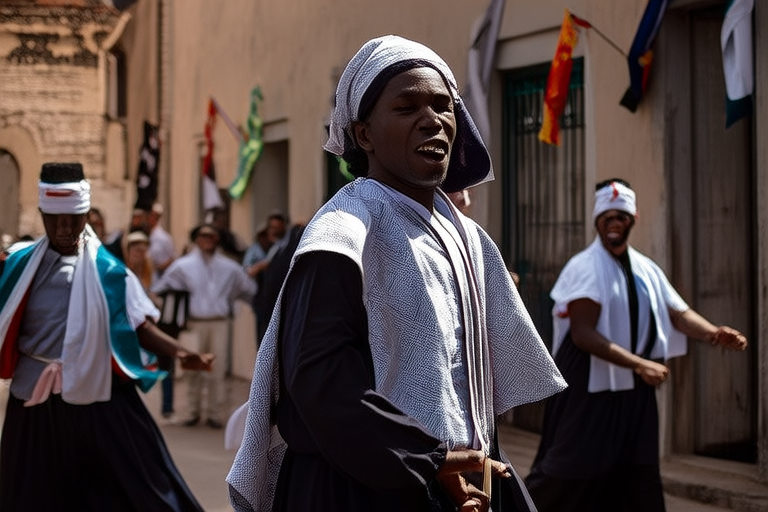Cultural Customs: A Window into Different Ways of Life

Cultural Customs: A Window into Different Ways of Life
Understanding and appreciating cultural customs is essential for broadening our perspectives on global diversity. Each culture offers unique insights into the lives, values, and traditions of its people, providing us with a lens through which we can better understand humanity’s rich tapestry. By delving into these customs, we not only enrich our own lives but also contribute to building a more empathetic and interconnected world.
The Importance of Cultural Customs in Shaping Identity and Community
Cultural customs play a pivotal role in defining who we are as individuals and as part of larger communities. These traditions serve as a bridge between past and present, connecting generations through shared experiences and collective memory. Whether it’s through food, music, festivals, or rituals, customs help shape personal identities and strengthen social bonds.
In many Asian societies, for example, tea ceremonies symbolize harmony, respect, and tranquility. Participants follow strict protocols to prepare and serve tea, emphasizing mindfulness and appreciation for the moment. This practice fosters a sense of unity among attendees, reinforcing communal values like patience and grace. Similarly, in Latin American countries, family gatherings often revolve around large meals prepared by multiple generations. These feasts celebrate not just the food itself but also the relationships built over years of shared history.
Customs also reflect broader societal norms and beliefs. For instance, in some African tribes, initiation rites mark important transitions in life such as puberty or marriage. These ceremonies instill moral teachings and cultural knowledge necessary for becoming responsible members of society. Meanwhile, indigenous communities worldwide maintain sacred connections with nature through storytelling and dance, preserving ancestral wisdom about living harmoniously with the environment.
Respectful Engagement with Local Customs for Travelers
When traveling to new destinations, it’s crucial for visitors to approach unfamiliar customs with openness and respect. Doing so allows for deeper connections with locals and enhances the overall travel experience. However, navigating cultural differences requires sensitivity and awareness of potential pitfalls.
To begin, travelers should educate themselves about basic etiquette before arriving at their destination. Learning key phrases in the local language shows appreciation for the effort required to communicate effectively across linguistic barriers. Additionally, familiarizing oneself with common gestures and body language helps prevent unintentional offenses. For example, nodding might indicate agreement in Western cultures but could mean something entirely different elsewhere.
Another important aspect involves dressing appropriately according to local standards. In conservative regions, covering shoulders and knees out of respect for modesty expectations demonstrates consideration for host communities. It’s equally vital to ask permission before taking photographs of people or sacred sites. Many places have specific guidelines regarding what can be captured visually, ensuring that privacy and sanctity are respected.
Finally, travelers must remain adaptable and patient when encountering unexpected situations. Cultural misunderstandings will inevitably occur, but responding calmly and seeking clarification rather than making assumptions fosters mutual understanding. By maintaining humility and curiosity, visitors can turn potentially awkward moments into opportunities for growth.
Promoting Cross-Cultural Understanding Through Shared Customs
Learning about other cultures not only broadens individual horizons but also promotes cross-cultural understanding and global unity. When people take time to appreciate each other’s traditions, they develop greater empathy and cooperation, breaking down barriers between seemingly disparate groups.
One notable example comes from Japan, where international students participate in traditional arts like calligraphy and ikebana (flower arrangement). These activities teach patience, precision, and attention to detail—qualities highly valued in Japanese society. As participants immerse themselves in these practices, they gain insights into Japanese aesthetics and philosophy, creating bridges of friendship and collaboration.
Similarly, interfaith dialogues bring together representatives from diverse religious backgrounds to share stories and experiences. Such exchanges highlight commonalities among faiths, such as compassion, justice, and peace, while respecting differences. These interactions encourage dialogue instead of division, paving the way for stronger partnerships within multicultural environments.
Moreover, global initiatives aimed at preserving endangered languages and traditions contribute positively to local economies and promote inclusivity. By supporting efforts to document and revitalize native tongues, communities preserve their heritage while opening doors to new economic opportunities. This dual benefit underscores the importance of recognizing and celebrating cultural diversity.
Embracing Cultural Diversity
As we conclude this exploration of cultural customs, let us reiterate the profound impact they have on shaping our understanding of the world. Embracing cultural diversity enriches our lives by exposing us to new ideas, perspectives, and experiences. We encourage everyone to continue seeking out opportunities for meaningful engagement with different cultures.
Whether through travel, education, or community involvement, there are countless ways to learn about and appreciate the richness of human traditions. By doing so, we foster a more inclusive and compassionate global society where everyone feels valued and respected. Let us commit ourselves to ongoing discovery and celebration of the beautiful mosaic that makes up our shared humanity.